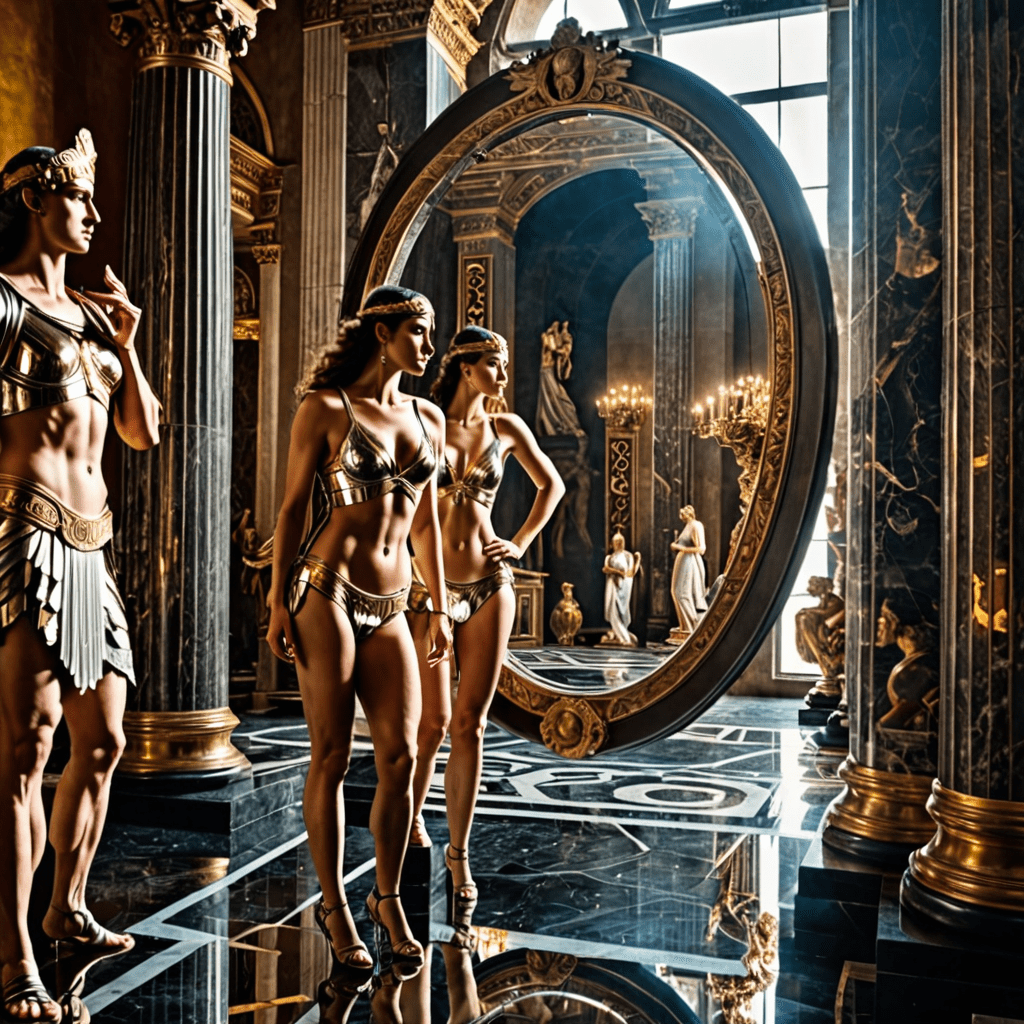Mythical Underworlds: Where Heroes Face Their Fates
I. Introduction to Mythical Underworlds
Mythical underworlds serve as profound realms within various cultural mythologies, representing the final destination of souls and the complex journey they must undertake. These underworlds hold great significance, often symbolizing the ultimate trials of mortality and existence. In many cultures, they reflect shared fears and hopes regarding death, the afterlife, and the fate of human beings.
Across different civilizations, common themes emerge from the portrayal of underworlds. They often echo concepts of judgment, rebirth, and the cyclical nature of life and death. The underworld is not merely a place of punishment; it is also where heroes confront their fates, learn vital lessons, and sometimes return transformed. In this article, we will explore the various aspects of mythical underworlds and their essential roles in hero narratives.
II. Historical Perspectives on Underworlds
A. Ancient Mesopotamian beliefs: The Land of No Return
In ancient Mesopotamian mythology, the underworld was often referred to as the Land of No Return, a dark and dreary place where the dead dwelled. The Mesopotamians believed that once a soul entered this realm, it could never return to the surface world. The underworld was governed by the goddess Ereshkigal, who ruled over the spirits of the deceased.
B. The Egyptian Duat: Journey through the afterlife
The Egyptian Duat is another significant underworld, characterized by a complex journey that souls must undertake after death. The afterlife was perceived as a series of challenges that the deceased must navigate to reach the Field of Reeds, a paradise where they could enjoy eternal life. Key elements of this journey included the weighing of the heart against the feather of Ma’at, which determined the soul’s fate.
C. Greek Hades: The realm of the dead and its river crossings
In Greek mythology, Hades is the underworld ruled by the god of the same name. Hades is often depicted as a shadowy realm divided into different areas, including the Elysian Fields for the virtuous and Tartarus for the wicked. Souls had to cross the river Styx, assisted by Charon, the ferryman, who demanded payment for his services. This concept highlights the importance of rituals and offerings in ancient Greek culture to ensure safe passage to the afterlife.
III. Comparative Analysis of Underworlds Across Cultures
A. Similarities and differences in depictions
While different cultures have unique representations of their underworlds, several similarities can be observed:
- Most underworlds serve as realms of judgment.
- They often involve a journey or passage that souls must undertake.
- Guardian figures are typically present to guide or hinder the deceased.
However, differences abound, particularly in how these cultures view the fate of souls. Some believe in a clear division between good and evil, while others may have more nuanced interpretations of morality.
B. Cultural influences on the concept of the afterlife
The concepts surrounding the afterlife often reflect the values and beliefs of the cultures from which they originate. For example, the emphasis on judgment in Egyptian mythology can be tied to their societal focus on order and accountability, while the Greek view of Hades reflects a more philosophical approach to existence and morality.
C. The impact of geography on underworld mythology
Geography has played a significant role in shaping underworld myths. For instance, cultures from riverine societies often associated their underworlds with water, as seen in the Greek Styx and the Egyptian Nile, while mountainous cultures might envision their underworlds as caves or deep valleys. This geographical influence provides insight into how different environments shape human understanding of life, death, and the afterlife.
IV. The Hero’s Journey: Descent into the Underworld
A. Common motifs in hero narratives
The descent into the underworld is a recurring motif in hero narratives, representing a transformative journey. Heroes often face significant trials that test their resolve and character. This descent symbolizes a confrontation with one’s inner demons and the chaos of the world.
B. Notable myths featuring underworld journeys
Several myths feature heroes who journey into the underworld:
- Orpheus: A musician who ventures into the underworld to retrieve his wife, Eurydice, only to lose her again due to a moment of weakness.
- Gilgamesh: In his quest for immortality, Gilgamesh encounters the underworld and learns vital lessons about life and death.
- Persephone: Her annual descent and return from Hades embody themes of seasonal change and rebirth.
C. Psychological interpretations of descent and return
The psychological implications of the descent into the underworld can be profound. This journey often represents a confrontation with fears and insecurities, leading to personal growth and transformation upon return. The underworld acts as a place of reflection, where heroes discover deeper truths about themselves and their roles in the world.
V. Guardians and Guides of the Underworld
A. Key figures: Charon, Anubis, Cerberus, and others
Various mythological figures serve as guardians or guides in the underworld:
- Charon: The ferryman of the Greek underworld who transports souls across the Styx.
- Anubis: The jackal-headed Egyptian god associated with mummification and the afterlife, guiding souls to their judgment.
- Cerberus: The three-headed dog in Greek mythology who guards the entrance to Hades, preventing the dead from escaping.
B. The role of these figures in guiding or hindering heroes
These guardians play crucial roles in the narratives of heroes. They can either assist in the journey or present formidable obstacles, reflecting the dual nature of death as both an end and a transition. Their interactions with heroes often highlight moral and ethical dilemmas.
C. Symbolism of guardians in different mythologies
Guardians in underworld myths often symbolize the thresholds between life and death, the known and the unknown. They embody the fears surrounding mortality and the need for guidance in navigating the complexities of existence.
VI. Trials and Tribulations: Challenges Faced by Heroes
A. Common obstacles encountered in the underworld
Heroes in underworld myths frequently face various challenges, including:
- Confrontation with past sins or failures.
- Encounters with powerful deities or spirits.
- Tests of strength, wisdom, or courage.
B. Symbolic meanings behind these trials
These trials often symbolize internal struggles and the complexities of the human experience. They serve as metaphors for personal growth, redemption, and the quest for knowledge.
C. Consequences of failure and success
The outcomes of these trials can vary significantly. Success may lead to enlightenment, transformation, or the restoration of order, while failure often results in despair, loss, or an inability to return. These consequences reflect the moral lessons embedded in the myths.
VII. The Role of Fate and Destiny in Underworld Myths
A. Exploration of fate vs. free will in hero narratives
Many underworld myths grapple with the tension between fate and free will. Heroes often face predestined outcomes, yet their choices can influence their journeys and the fates of others.
B. Myths that emphasize predetermined outcomes
In stories like that of Persephone, her descent into Hades is often viewed as a predetermined fate, underscoring themes of inevitability and cyclical existence. Such narratives highlight how fate can intertwine with personal agency.
C. The tension between personal choice and divine intervention
The interplay between personal choice and divine intervention is a recurring theme. Heroes often find themselves at the mercy of greater cosmic forces while still possessing the agency to make pivotal decisions that affect their outcomes.
VIII. Underworlds in Contemporary Culture
A. Influence of ancient myths on modern literature and film
Ancient underworld myths continue to influence contemporary literature and




